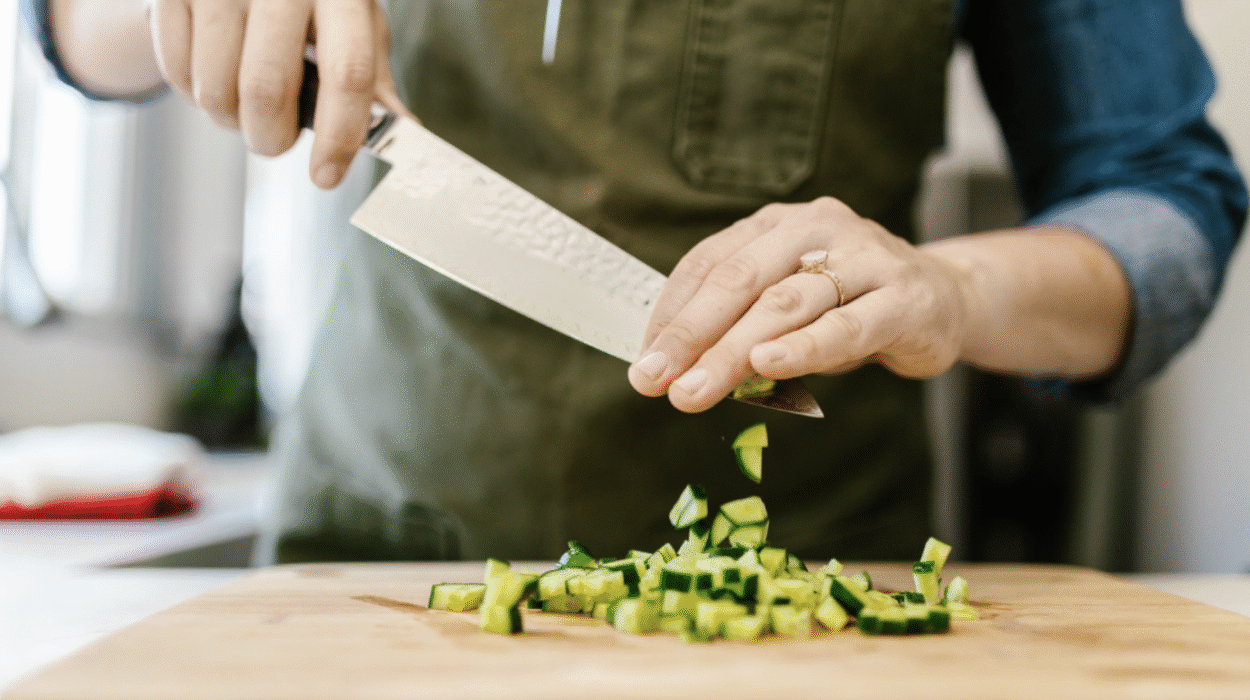When it comes to kitchen cutlery, the debate of German vs American knives is a common one among culinary enthusiasts. Both types of knives have their unique characteristics, making them suitable for different cooking styles and preferences. Understanding these differences can help you choose the right knife for your kitchen. In this article, we will delve into the key features, benefits, and drawbacks of both German and American knives to guide you in making an informed decision.

History and Origins of German Knives
German knives have a rich history that dates back centuries. Renowned for their craftsmanship, brands like Zwilling and Wsthof have set the standard for quality and durability in the knife industry. German knives are typically made from high-carbon stainless steel, which offers a balance of sharpness and resistance to rust. To learn more about the history of these knives, you can visit Zwilling Knives.
American Knives: A Modern Approach
American knives, on the other hand, are relatively new to the scene. They often incorporate innovative designs and materials, such as high-alloy stainless steel, to provide a cutting-edge performance. American knife makers tend to focus on creating versatile tools that cater to a wide range of culinary tasks, from chopping vegetables to carving meats.
Blade Design and Construction
One of the main distinctions between German and American knives is their blade design. German knives are known for their thicker blades, which provide durability and strength. This makes them ideal for heavy-duty tasks like cutting through bone or tough vegetables. For more details on blade thickness, check out this German Knife Blade Thickness.
American knives, however, often feature thinner blades with a sharper edge, making them perfect for precision cutting and fine slicing. This design is especially beneficial for tasks that require accuracy, such as filleting fish or preparing delicate garnishes.
Handle Material and Ergonomics
The handle material and design are also crucial factors to consider when choosing a knife. German knives typically have robust handles made from materials like POM or polymer, offering a secure grip even when wet. This design ensures comfort and safety during prolonged use.
In contrast, American knives often incorporate ergonomic designs with handles made from high-quality wood or composite materials. These handles are crafted to fit comfortably in the hand, reducing fatigue and enhancing control during cutting tasks.
Maintenance and Care
Proper maintenance is essential for prolonging the life of your knives. German knives require regular honing to maintain their edge, as their softer steel is more prone to dulling. For a comprehensive guide on honing, visit Honing German Knives.
American knives, made from harder steel, retain their sharpness longer but can be more challenging to sharpen when needed. It is crucial to use the appropriate sharpening tools and techniques to avoid damaging the blade.
Price and Accessibility
When it comes to cost, German knives are generally more expensive due to their reputation and the quality of materials used. However, they are widely available through various retailers and online platforms.
In contrast, American knives offer a more affordable option without compromising on performance. They are also becoming increasingly accessible as more brands emerge in the market, providing a wider range of choices for consumers.
Performance in the Kitchen
The performance of a knife in the kitchen is paramount. German knives excel in heavy-duty tasks and are known for their durability, making them a favorite among professional chefs. American knives, with their sharper edges, are ideal for precision tasks and are often preferred by home cooks looking for versatility.
Choosing the Right Knife for Your Needs
Ultimately, the choice between German vs American knives depends on your specific needs and cooking style. If you frequently prepare large cuts of meat or require a robust tool for tough tasks, a German knife may be the best choice. On the other hand, if you value precision and versatility, an American knife might better suit your kitchen.
For more insights into selecting the right knife, consider exploring Best German Knives.
Conclusion
In conclusion, both German and American knives offer unique benefits that can enhance your culinary experience. By understanding the differences in their design, materials, and performance, you can make an informed decision that aligns with your cooking needs and preferences.

FAQs
1. Are German knives better than American knives?
It depends on your needs. German knives are known for their durability and strength, while American knives offer precision and versatility.
2. How should I maintain my German knife?
Regular honing and proper cleaning are essential. For more tips, refer to this German Knife Care Guide.
3. Can I use American knives for heavy-duty tasks?
While American knives are versatile, they may not be as durable as German knives for heavy-duty tasks. It’s essential to choose the right knife for the job.
For further reading on knife comparisons, you can visit German vs Japanese Knives.
This article contains affiliate links. We may earn a commission at no extra cost to you.


